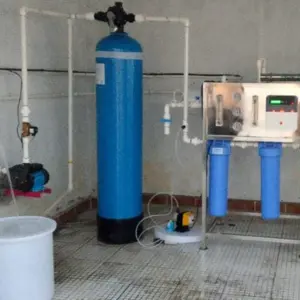The 5 Micron Sediment Filter is built with high-quality polypropylene to trap particles as small as 5 microns, including rust, dust, and silt. It supports flow rates up to 75 LPM, operates under pressure up to 8 bar, and fits 10", 20", or 25 cm housings. Designed for pre-filtration before RO/UV/UF systems, it protects pumps, pipework, and appliances from sediment-related wear. This eco-friendly mechanical filter requires no electricity and suits both residential and industrial use.
- 5 Micron Filtration: Removes fine sand, silt, dust, and rust particles
- Durable Polypropylene Build: Long-lasting and resistant to wear
- Efficient Flow Rate: Maintains strong water flow; reduces pressure drop
- Eco-Conscious: No electricity, no water wastage
- Versatile Compatibility: Ideal for homes, commercial, irrigation & RO pre-filters
- Easy Maintenance: Replace cartridges every 3–6 months, tool-free setup
- Protects Equipment: Safeguards pumps, nozzles, and water appliances
- Multiple Sizes: Available in 10″, 20″, and 25 cm housing options
|
Feature |
Details |
|
Filter Type |
Cartridge / Bag / Yarn-wound |
|
Micron Rating |
5 µm |
|
Material |
Polypropylene (PP) |
|
Housing Sizes |
10″, 20″, 25 cm (approx.) |
|
Flow Rate |
Up to 75 LPM (varies by housing) |
|
Inlet/Outlet |
¾″ or 1″ |
|
Max Pressure |
6–8 bar (varies by model) |
|
Maintenance |
Every 3–6 months (based on water quality) |
|
Application |
Borewell water filtration – home & industrial |
- Trusted Quality: Premium PP material built to last
- Protects Your Investment: Reduces wear on pumps, hose reels & filters
- Broad Use Cases: Works for homes, farms, offices & industrial setups
- User-Friendly: Easy to install, maintain & replace
- Eco-Smart: Zero water wastage, no power needed
- Backed by Experts: Designed by water filtration specialists
- Ready to Go: Available in multiple sizes and formats
1: How does a 5 micron cartridge filter work?
It captures particles >5 microns as water flows through the filter, preventing clogging and wear on pumps, RO membranes, and pipes.
2: How often should it be replaced?
Every 3–6 months, depending on sediment levels and usage volume.
3: Is installation DIY-friendly?
Yes. Most models include mounting brackets and wrench keys for easy setup.
4: Can it be used for irrigation or hose reels?
Absolutely! It prevents nozzle clogging and damage, ensuring reliable performance.



